The Ultimate Guide to an Omni Marketing Channel
- April 14, 2023
- Customer Experience, Digital Marketing, Lead Generation
Omni Marketing Channel, better known as Omnichannel marketing is the seamless integration of branding, messaging, and online and offline touchpoints as consumers move down the sales funnel, enabling a more impactful customer experience. Omnichannel marketing takes a consumer-centric view of marketing tactics.
It is necessary to stay front of mind for your potential and existing customers in today’s day and age of online marketing.
The concept of Omni-channel is not new but it has been derived from its corollary concept of multi-channel retailing. However, Darrel Rigby (2011) did not differentiate the former from the latter. Still, literally distinguishing the two we can say OMNI denotes ALL whereas MULTI means MANY and the like.
The term was first coined by Darrell Rigby in 2011. for more detail, you may visit the link here.
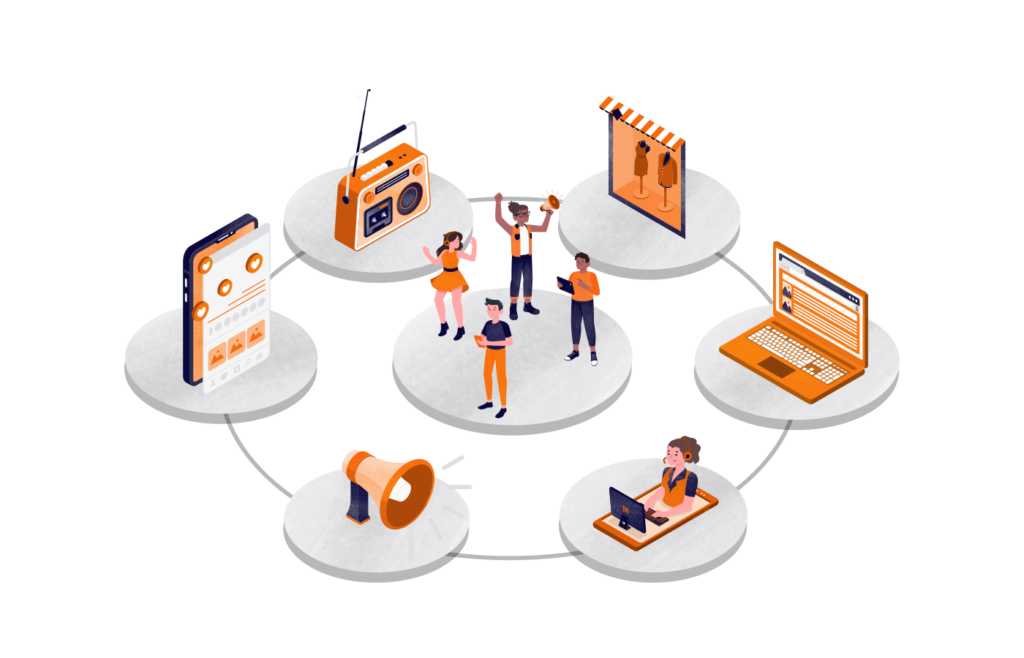
What is Omnichannel Marketing
Omnichannel marketing involves integrating branding, messaging, and touchpoints across online and offline channels to create a more impactful customer experience as they progress through the sales funnel.
Omnichannel marketing takes a consumer-centric view of marketing tactics. Consumers can now interact with brands on innumerable channels, from social media to customer service hotlines. An omnichannel approach ensures that the consumer has a positive, consistent experience on each channel, by offering a few key elements:
Consistent, identifiable brand tone and vision. Personalized messaging based on specific interests.Content that is informed by past interactions and the current stage of the buyer’s journey.
What’s the Difference Between Multichannel Marketing vs. Omnichannel Marketing?
While omnichannel and multi-channel are both concepts based on the idea of engaging consumers across multiple platforms, they are not interchangeable. Multichannel looks at the specific channel and how the transaction will be completed there. Alternatively, omnichannel takes into account that the customer journey may span multiple channels – and looks at how to create the best experience as consumers move between them. Each interaction is a touchpoint on a path, leading to a conversion. Let’s take a deeper look at the differences between the two:
Multichannel Marketing
Multichannel is much simpler in its intention, which is to distribute content and advertisements across various channels. A multichannel strategy makes an organization available to consumers online, in print, in-store, etc. The consumer can choose where they want to interact with the brand, however, content and customer engagements within these various channels are often very siloed. With this in mind, multichannel is more reflective of operations, reaching as many channels as appropriate, while omnichannel is more reflective of the overall customer experience.
Omnichannel Marketing
Omnichannel also makes brands accessible across online and offline channels, however, it goes a step further to ensure an integrated, seamless experience across each one. As consumers move across devices and online and offline platforms, transitions are seamless and messages are informed by prior encounters. An omnichannel approach enables organizations to truly take a consumer-centric approach that keeps the comprehensive customer journey top of mind.
The Benefits of Using an Omnichannel Approach
Today, most brands will agree that an omnichannel approach can yield the best results. While implementing an omnichannel approach is far from simple, when done properly it offers a host of benefits. Today’s consumers are accustomed to being bombarded with messaging from various brands, and as a result, they have become increasingly selective of which brands they choose to engage with. Creating omnichannel customer engagements can act as a brand differentiator, bringing the following benefits:
A Better User Experience – Since omnichannel focuses on the individual experience across devices instead of the channel, the customer experience (CX) is better. By focusing on the customer instead of the platform, companies can drive more sales and better customer retention rates.
Cohesive Brand Strategy & Identity – Creating a seamless strategy across channels means building an easily identifiable brand image and tone. Organizations should base this image on core audience needs and values. By focusing on the overall experience and working within your brand guidelines to target each channel, you will have a more comprehensive brand strategy that will translate into increased loyalty and more targeted messaging.
Increased Revenue – An omnichannel approach encourages customers to engage with a brand across multiple touchpoints and channels. These increased, diverse engagements at each stage of the buyer’s journey can help increase revenue, as research shows that customers that engage with multiple touchpoints tend to be 30 percent more valuable. This more targeted messaging also builds loyalty, making it more likely a customer will purchase from your brand again. Repeat customers on average contribute to 40 percent of revenue, despite being a smaller portion of your consumer base.
Better Attribution Data – Going truly omnichannel should not just extend to a user’s experience with your brand, but with your data analytics as well. By tracking engagements across channels, brands get a better understanding of what the customer journey looks like, when and where consumers prefer to engage, and which campaigns have created the most value. All of this data can be put back into your strategy to build more targeted campaigns and optimize media spending.
What is Omnichannel Attribution?
In a world where there are now multiple touchpoints across channels, which should get credit for the conversion? That can be difficult for marketers to answer, without the appropriate attribution model in place. Marketers often rely on multi-touch attribution and media mix modeling (MMM) to understand what led to a conversion, however, these models are not perfect.
MMM: Media Mix Modeling only looks at long-term aggregate data, rather than person-level insights. While this allows marketers to see the impact a campaign had on conversions, as well as historical trends, such as times of the year when shoppers increase or decrease engagements, it does not provide insight into individual preferences. MMM also uses several years’ worth of data, meaning teams cannot use this model to optimize campaigns in real time.
MTA: Multi-touch attribution offers granular, person-level data in real time across each touchpoint. When analyzed, teams can use this data to make changes to campaigns as they run, to better cater to consumer needs. The challenge with multi-touch attribution is that it is difficult to determine how much credit each touchpoint should be given for a conversion. For example, was the webinar or the email campaign more influential in moving the consumer toward conversion?
Attribution models no longer have to rely on outdated practices and can now give a more holistic view of the marketing funnel and the buyer’s journey. Just as omnichannel tactics combine online and offline channels, omnichannel attribution removes silos between campaign measurements to understand the role each touchpoint played in the journey.
Leveraging omnichannel attribution offers a host of benefits to brands, allowing them to correlate online and offline measurements, and gain visibility into both person-level insights and aggregate, historical shopper trends.
Omnichannel marketing statistics
It’s easy to see why omnichannel marketing makes sense when you look at the data. It pays back in terms of lead generation, nurturing, sales, and retention. Omnichannel Strategy is improving the customer experiences on all marketing channels, improving user experience and customer loyalty. It can also streamline your marketing efforts. The numbers tell the story:
Who’s doing it now: In a recent Shopify report, 53% of retailers said they are adopting tools to help them sell in various channels.
Why it works: Consumers aren’t just shopping in a single channel. As a brand, you must be present in every channel your audience frequents, and that applies to both the digital and physical world. Consider the fact that 57% of consumers have used a retailer’s mobile app while shopping in-store. Furthermore, a quarter of consumers say they have purchased a product seen in a brick-and-mortar store on their phone, while another quarter went on to purchase it on a PC.
What it can do for your business: The purchase rate of campaigns using 3 or more channels is higher than single-channel campaigns. Campaigns that incorporate SMS are 47.7% more likely to convert, and those that incorporate segmented email marketing communications earn 62.2% higher order rates.
What it can do for productivity: Marketers are seeing numerous benefits from a personalized omnichannel marketing campaign, including increased conversion rates lead generation, and new customer acquisition (56%); better audience lifetime value (36%); and decreased churn/increased retention (23%).
How to be successful with omnichannel marketing
A shift to omnichannel marketing in your company can be done systematically. Follow these steps:
Map your audience’s potential journey, from when they first learn about you, through research and consideration, to paths to purchase, buy, and beyond. Don’t stop when they make the purchase: Analyze your onboarding process, and see how you can nurture the relationship to encourage repeat buying and retention. This will enable you to determine where you need to meet them on that journey.
Identify any other audience communication that’s happening from all groups in your company, including sales, customer service, and others. Make sure that all interactions with your audience work together to create a cohesive brand experience.
Gain consensus internally about the consistent message you plan to send for each of these connection points within your overall company message. Make sure everyone from top-level decision makers and marketing execs to account representatives and call center staff is on the same page when it comes to your brand proposition and marketing strategy.
Analyze audience data to be sure you’re developing omnichannel experiences for all buyers. Detailed profiles of buyer persona based on buying behavior, demographics, survey data, and other unifying characteristics can help you create a picture of the core audience segments you want to target.
How to build an omnichannel marketing strategy?
Omnichannel marketing is suitable for businesses of all sizes and is increasingly becoming more available. Even smaller and growing business marketers are seeing the benefits of launching an omnichannel marketing strategy.
1. Get your whole team on board
A successful omnichannel strategy requires buy-in from everyone. They need to agree to make the customer the brand’s focal point and to work together.
This extends beyond the marketing team.
After all, working in silos is counterintuitive to the fundamental notion of omnichannel marketing. Your channels work together to create a better customer experience through omnichannel. And so should your team members.
2. Analyze your customer data
Customer data is at the heart of driving customer operations in an omnichannel approach. Every member of your team should be using data to create a better experience for the customer.
For example:
- Marketers need data to send the most relevant message to customers at the right time.
- The product team needs it for merchandising the products that customers appreciate the most.
- Customer success representatives need it for maintaining consistent conversations.
3. Appropriately target your messages
Fruitful omnichannel digital marketing hinges on personalization. The best way to target your message, now that you have all that nifty data on your customers, is to segment your subscribers into smaller lists.
Assigning contacts to different categories, based on similar traits, makes it easier to send personalized messages. These traits could include:
- Profile data: demographics, age, gender, marital status, location, etc.
- Campaign engagement: how your customers interact with certain campaigns and channels
- Shopping behavior: where your customer is in their customer journey, how often they shop, when they purchased last, etc.
4. Optimize for mobile
Everyone has a smartphone. As a result, mobile optimization is a must for any marketer.
From 2018 to 2021, mobile e-commerce sales have grown by 22% from 2.91 to 3.56 billion. Moreover, they’re projected to climb even higher in 2022. To make mobile even more relevant, almost three out of every four dollars spent by shoppers on online purchases are done via mobile.
With this in mind, you should make sure that your omnichannel campaigns are 100% mobile-optimized.
Everything you send needs to be optimized for mobile. This includes all of your emails, texts, and promotions.
5. Test, measure, and test again
Your omnichannel marketing strategy will improve over time as you collect and analyze customer data. Robust marketing platforms give you loads of insights into your performance, from an overall sales dashboard to advanced reporting that shows aspects like segmentation performance and the highest money-making campaigns.
This means you need to be active in testing components like different messages, headers/subject lines, images, and send times.
Test your processes regularly to see which segments best respond to particular kinds of messages. If you track and measure your data regularly, you are bound to find the perfect formula.
David Sung, digital marketing director of SM Global Shop, is always testing to uncover indications that a tweak could be beneficial.
Once you have hundreds of thousands of customers in your database, even a .2 or .3 percent increase in any of your metrics can drastically have an improvement on your revenue overall. So I do believe A/B testing is very crucial.”
Benefits of Omnichannel Marketing
The perception across the industry is generally that “omnichannel” is that north star. While having and enabling multiple channels certainly isn’t bad, seamless unification and integration, and automated execution should be the goal.
A successful omnichannel marketing strategy can help your organization realize the following benefits:
1. Boost Customer Loyalty
Customers purchase from the brands they value and trust. Omnichannel marketing efforts provide a consistent experience across all platforms and offer a personalized experience for each audience member. This approach improves the overall customer experience and leads to increased customer loyalty and retention.
2. Improve Brand Recall
Omnichannel marketing’s emphasis on cross-channel consistency ensures your customers will see your brand in the same way across platforms and devices. This consistency helps strengthen brand recall for your customers. A strong sense of brand recall will increase the likelihood of purchase across your customer base.
3. Realize Increases in Revenue
Omnichannel strategies improve customer loyalty, strengthen brand recall, and promote repeat purchases. These efforts help brands retain customers and attract new customers through content personalization and word-of-mouth marketing. With more customers, comes more business and, of course, more revenue.
The Serial Seller Takeaways
It is only through an omnichannel marketing approach that you can offer your customers a consistent experience across all touchpoints. If you do this successfully, you don’t just boost customer engagement but also your users’ affinity for your brand.
They’ll love you more for always giving them satisfying experiences that are relevant to whatever channel they choose to communicate with. In the end, all that leads to better sales.
It might sound overwhelming to maintain a good presence on multiple channels and get them all working in unison to provide a seamless experience to each of your customers. However, all it really takes is the help of the right tool.
With the right choice of omnichannel marketing software, you can manage all activities on all your channels, in one place. Then, you’ll only be limited by your vision as a marketer and entrepreneur.
If you want help with your business’s Omni Marketing Channel – Book a Call with Us Today!
About us and this blog
We are a Full-Service Sales & Marketing provider that aims to help small to medium businesses increase their leads and sales while helping remove the business owners from their day-to-day activities so they can focus more on the long-term goals of their business.
Book a Meeting with us!
We offer Done-For-You Sales, Sales Coaching, and Advisory as well as Digital Marketing Services. If you want to increase the leads generated for your business and need some guidance and accountability, book a call with us now.
Subscribe to our newsletter!
More from our blog
See all postsRecent Posts
- How Do You Remove a Google Review April 2, 2025
- How to Add Banner with Custom CSS in WordPress Elementor March 24, 2025
- How Can I Leave a Google Review March 21, 2025

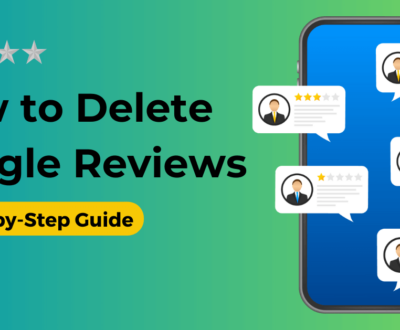
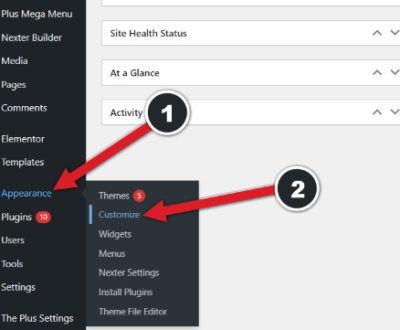

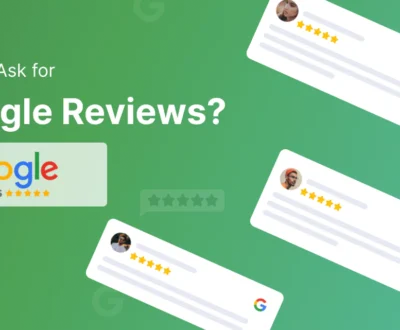
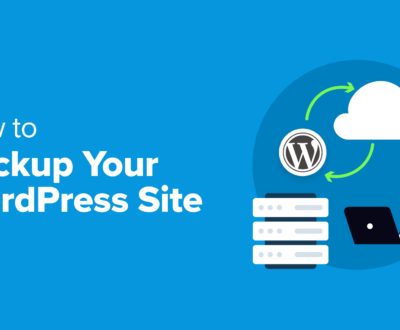
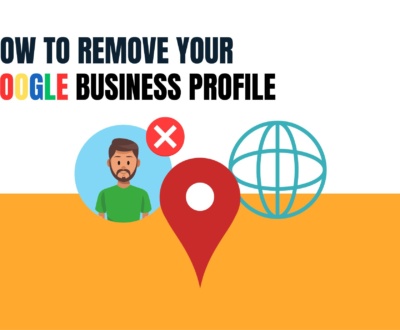
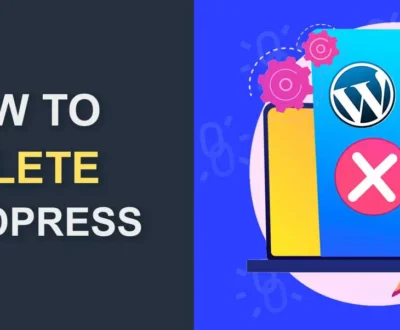
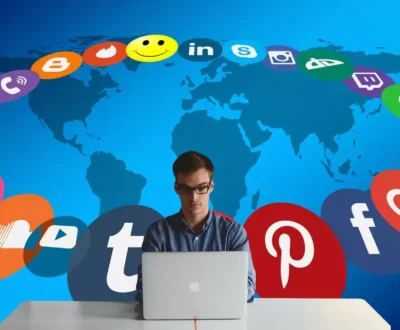

Pingback: The Ultimate List of Marketing Strategies for Small Businesses